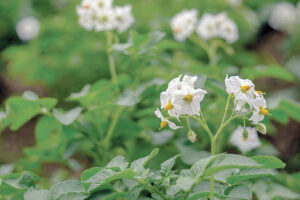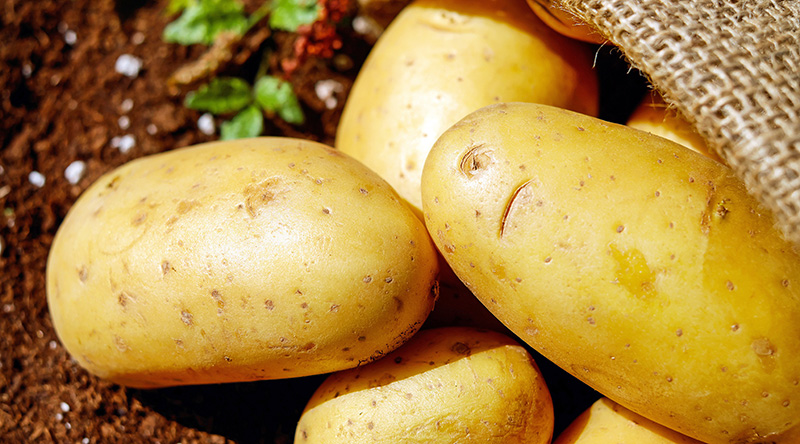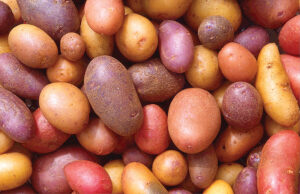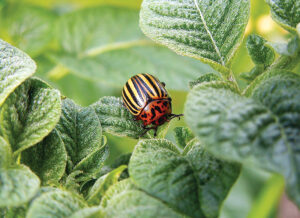Baby Potatoes
Po-TAE-to, Po-TA-to
Nothing tastes better than fresh baby potatoes from the garden. Boiled, baked or put into salads or soups, I don’t believe there is a single preparation method that is not enjoyable. How do you know when those perfectly sized small potatoes are ready? And, when should you harvest the rest of your crop?
 Important crop
Important crop
Potatoes are the fifth most important food crop worldwide! They are native to the mountainous west-central region of South America and scientists believe they may have grown wild there for over 13,000 years. The first planting for food use was likely between three and seven thousand years ago.
From there their use spread across the continent. When the Spanish arrived in 1532, they noted the crop’s storage capabilities and extensive use by the Incas. Intrigued, the conquistadors brought them to Spain in the 1570s. Potatoes were first cultivated for livestock, but once their diverse culinary use became known their use began to spread across all of Europe.
For centuries, potatoes have been a vital staple in the human diet. Rich in potassium, vitamins B and C, complex carbohydrates, fiber and protein, potatoes are formed as the underground part of the plant’s stem thickens. They serve as both a food reserve for the plant and method of reproduction; new plants arise from buds on the potatoes.
Potatoes require deep, loose, well-drained soil and a full-sun location. Plant them two to three inches deep and 10 to 12 inches apart with their eyes pointed up. You can begin to plant them as soon as any danger of heavy frost has past. One of the most important aspects of growing potatoes is to hill them. When plants reach five to six inches in height, form a hill around the plant by raising the soil around the plant’s base.
Harvesting potatoes

Those perfect baby potatoes should be ready to harvest about 10 weeks after planting them. Keep an eye on your plants; once they begin to blossom, the new potatoes should be ready for harvest. Use your hands to pluck out the small tubers. Mature potatoes, great for storing over the winter, should be harvested before the first frost. A good signal to harvest is when the plants begin to die back. The most important rule of thumb in potato harvesting is to remember to not damage the roots of the plants or pierce the skin of the potato. Potatoes should be stored in a dark, dry place to promote their storage capacity.









Pingback: Potato skin taco - Canada's LOCAL Gardener magazine